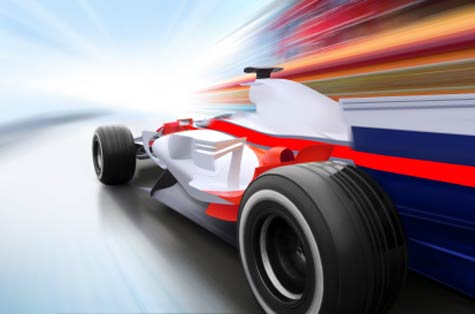This week I went to the U2 concert at the SAP Center. This used to be the HP Pavilion, one of the more brilliant moves by HP’s old CEO Carly Fiorina, because every plane that flew into San Jose (the heart of Silicon Valley) was treated to a massive roof-mounted HP Pavilion sign. Apparently, SAP saw the value that Meg Whitman, HP’s current CEO, didn’t. But this wasn’t about HP or SAP. EMC had invited a few of us to watch the concert, which was backed up, I guess literally, by EMC’s appliance storage platform, the VNXe-3200.
It used to be that concerts were just a bunch of folks you mostly couldn’t distinguish playing music so loud you thought your ears were bleeding, with a few pyrotechnics and some stage insanity (like wrecking the instruments at the end). Now they are often multi-media extravaganzas with electronically synced lighting, video and mechanized stages that transform throughout the show.
In short, they’ve gone from when the leading technology was vacuum tube amps of incredible power and disappointing accuracy to digital wonders that likely make the lunar launch look like child’s play in comparison. Everything must work flawlessly, and suddenly that .999 quality requirement for enterprise hardware and software becomes important to entertainment.
These events are often used as sales opportunities and this concert reminded me of the F1 racing events that were similarly used. While I love racing, I think, with regard to value for the dollar, the U2 venue provides the greater return.
Applied Technology
In looking at the implementation, it appears that U2 used a converged solution that was partially home grown and very unique: a performance-focused generic server with NVIDIA graphics hardware, likely with a lot of affinity with a workstation in terms of configuration, high-speed networking, and that VNX-e3200 in a custom-made portable rack.
Given the amount of abuse that traveling concerts put on hardware, I wonder if DARPA shouldn’t drop in and take notes on what they have. I expect it would rival Mil-Spec implementations and likely cost a fraction of what a typical Mil-Spec package would otherwise cost.
This setup is then used as a mini-render farm to create the graphics that will be used during the concert from feedback during rehearsal, if they choose. They can create a unique experience every night or simply improve it as needed.
I think we are looking at the tip of the iceberg here. This could actually become a rather interesting market segment for technology.
F1 Racing
This may seem like a strange jump, but previously where I most often have seen enterprise technology and entertainment collide was in professional racing. Yes, there was a little in NASCAR, but where this really seemed to be showcased was in F1. The level of technology applied to assure one of those cars was competitive, from the wind tunnel testing to the telemetry from the cars, rivaled a modern day space program, but the only real benefit the tech company seemed to see was the sticker on the car.
And you always had the risk of being on a losing car, something the then-winning AMD team used to point out with some glee when the Intel Itanium car seemed to prophetically break down almost every race.
Now here is where I connect the dots. I think entertainment is both better and safer than racing as a showcase. Yes, you do run the risk of someone saying or doing something stupid, but if you’ve ever seen what drivers do in the off hours, you have this regardless. With entertainment, you can be a bigger part of what is a less risky event. Music plays to a more diverse audience as well. Racing is still mostly a guy’s sport, and with more and more women in management roles, a box at a U2 concert will likely gain in value over a paddock at an F1 race.
Finally, the technology is more aggressively used in the event. In a race, it is mostly about the car and driver, and the car brand is king. But with music, much of the excitement is orchestrated by the technology behind it, creating a stronger story showcasing the performance and reliability of that hardware.
Wrapping Up: Music Is a Better Tech Showcase
I shouldn’t just say music is better and, like my F1 example, it would depend on the group or entertainer you were backing. But given the broader potential diversity of folks interested in entertainment, the more active role IT technology will play going forward in creating it, and the massive expected advancement in this segment, I think music is likely better than racing for promotional support. I also expect it currently costs a lot less and often, particularly with bands like U2, much of the expenditure likely goes to a charitable cause and not someone else’s pocket.
Put another way, tech advertising in sports is just about getting the brand out there. Tech promotion in broad entertainment can also be a strong showcase of the technology and proof that the company gets that it isn’t just a man’s world anymore. Something to noodle on this long weekend.
Rob Enderle is President and Principal Analyst of the Enderle Group, a forward-looking emerging technology advisory firm. With over 30 years’ experience in emerging technologies, he has provided regional and global companies with guidance in how to better target customer needs; create new business opportunities; anticipate technology changes; select vendors and products; and present their products in the best possible light. Rob covers the technology industry broadly. Before founding the Enderle Group, Rob was the Senior Research Fellow for Forrester Research and the Giga Information Group, and held senior positions at IBM and ROLM. Follow Rob on Twitter @enderle, on Facebook and on Google+




